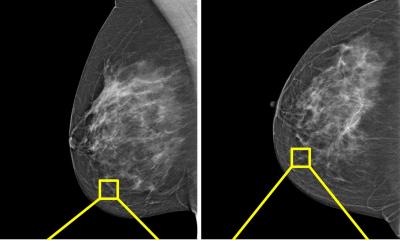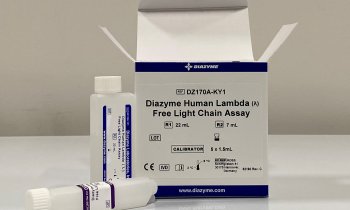Image source: Adobe Stock: Dr_Microbe
News • Only 2 out of 4 methods for EMS found to be useful
Sepsis screening: inadequate tools lead to underdiagnosis
Two out of the four internationally-recommended screening tools used by emergency medical services are inadequate for recognising sepsis, according to new research presented at the European Emergency Medicine Congress.
Mrs Silke Piedmont, a health scientist at the Department of Emergency Medicine Campus Benjamin Franklin Charité – Universitätsmedizin Berlin (Germany), and her colleagues from the University of Magdeburg and Jena (Germany), analysed data on 221,429 patients who were seen by emergency medical services (EMS) in Germany in 2016 outside of the hospital setting. They found that only one out of four screening tools had a reasonably accurate prediction rate for sepsis – NEWS-2 (National Early Warning Score). It was able to correctly predict 72.2% of all sepsis cases and correctly identified 81.4% of negative, non-septic, cases. A second screening tool, qSOFA (quick Sequential Organ Failure Assessment), correctly predicted 96.6% of patients who did not have sepsis.
Mrs Piedmont said: “We found that paramedics never documented a suspicion of sepsis, and emergency services physicians rarely did so, only documenting a suspicion in 0.1% of cases. The screening tools recommended in the Surviving Sepsis Campaign guidelines differed greatly in terms of which and how many patients were identified as possibly having sepsis.”
Recommended article

News • Mapping prevalence across European hospitals
Sepsis: suprisingly common, underdiagnosed, and deadly
New research from Lund University has found a suprisingly high incidence of sepsis across hospital admissions. The experts say that the condition can be likened to an epidemic.
In terms of both percentages and absolute numbers, more patients died from sepsis than from heart attacks or stroke
Wolfgang Bauer
Speaking before the Congress, her colleague Dr Wolfgang Bauer, senior physician at the Charité, said: “In emergency care, there are good and long-established standards for the detection and treatment of heart attacks and stroke that have improved patients’ chances of survival. Unfortunately, a lot less attention is paid to sepsis and standards to improve early sepsis recognition and survival. Our study found there was a similar incidence for sepsis, 1.6%, as for heart attacks, 2.6%, and stroke, 2.7%, in cases seen by emergency medical services. However, in terms of both percentages and absolute numbers, more patients died from sepsis than from heart attacks or stroke. Out of all cases with sepsis, 31.4% died within 30 days after being seen by emergency services, versus 13.4% and 11.8% respectively for heart attacks and stroke. These findings emphasise the need for better sepsis awareness and more frequent use of effective screening tools.”
Mrs Piedmont and colleagues say the Surviving Sepsis Campaign guidelines about which sepsis screening tool is the most reliable for use by EMS are not specific enough and are based on little, useful evidence. The aim of the current study was to assess which of four screening tools was best for EMS to predict sepsis:
- NEWS-2 (National Early Warning Score),
- MEWS (Modified Early Warning Score),
- SIRS (Systemic Inflammatory Response Syndrome)
- or qSOFA (quick Sequential Organ Failure Assessment).
Sepsis, often referred to as blood poisoning, is a life-threatening condition that arises when the body’s immune system goes into overdrive in response to an infection and injures the body’s tissues and organs. It is vital to recognise it early, otherwise it can lead to shock, multiple organ failure and even death.
A rule of thumb for EMS staff could be that NEWS-2 negative patients are the most likely not to have sepsis, and qSOFA positive patients are the most likely to have sepsis – and also that qSOFA misses many patients with sepsis
Silke Piedmont
The study linked data on 221,429 cases with follow-up between 2016 and 2017 from ten health insurance companies with information from documentation by paramedics and emergency doctors on 110,419 cases in 2016. This enabled the researchers to calculate the four screening tools’ ability to predict that a patient had sepsis. The predictions were confirmed or rejected during subsequent hospital investigations after contact with EMS. The researchers also looked at incidence and death rates for sepsis compared to heart attack and stroke, how much was recorded about any suspicions of sepsis, and how often EMS staff would have documented sepsis if they had used screening tools.
When they compared the performance of the four screening tools, the researchers found that NEWS-2 was the best for identifying patients with sepsis as it had a sensitivity (correctly predicted sepsis) of 72.2%, followed by MEWS, which had a sensitivity of 46.8% and a specificity (correctly predicted no sepsis) of 88.4%, SIRS (30.4% sensitivity, 93.8% specificity), and qSOFA (24% sensitivity, 96.6% specificity). Out of all EMS cases, 24.3% of cases were predicted to have sepsis by at least one of the screening tools, but only 0.9% were predicted to have sepsis by all four tools simultaneously.
“The incidence and death rates for sepsis and the low recognition of it, emphasise the need for better awareness and more frequent use of screening tools,” said Mrs Piedmont. “No screening tool provides ideal performance. NEWS-2 best supports emergency medical services in identifying most patients with sepsis. EMS patients that are NEWS-2 positive should be flagged up as potentially having sepsis and referred for special attention and assessment by emergency doctors who are expert in sepsis. If EMS insist on using the qSOFA, they should be aware that a positive qSOFA makes sepsis likely, but also, that a negative qSOFA cannot rule out sepsis conclusively.
“A rule of thumb for EMS staff could be that NEWS-2 negative patients are the most likely not to have sepsis, and qSOFA positive patients are the most likely to have sepsis – and also that qSOFA misses many patients with sepsis. Further clinical patient assessment and evaluation will always be needed for both tools. Future sepsis guidelines should be more precise and omit recommendations for MEWS and SIRS for emergency medical services since they were inferior in all the measures for accuracy.”
The researchers say these findings could also apply to other countries, especially as studies in Canada and the UK support aspects of their results.1,2 “Ours is the first study comparing all four screening tools and showing the predictive usefulness of applying the screening tools to all adult patients independently of any presumptions or preliminary diagnoses by emergency medical services,” said Mrs Piedmont.
There were two things that could be improved, say the researchers:
- better and complete assessments of vital signs, such as body temperature and breathing rate;
- and “translating” alarming vital signs into a suspicion of sepsis, which could be helped by using a good sepsis screening tool.
“Sepsis causes approximately 20% of all global deaths,” said Mrs Piedmont.3 “There is great potential to save lives and maintain patients’ quality of life if sepsis is recognised and treated earlier. As most sepsis cases start outside of hospital, emergency medical services play a vital role. They can shorten the length of time until sepsis treatments can be provided quickly in hospitals and reduce the risk of dying if they suspect sepsis.
“In addition, it’s crucial that the public’s awareness of sepsis is increased, by integrating it into education systems and through media campaigns. Patients ought to know the variety of sepsis symptoms, how urgent it is to call for prompt help and to ask the question ‘Could it be sepsis?’. As sepsis prevention is even better than early detection, they should also be aware of preventive measures such as hygiene and vaccination.”
Recommended article

News • Blood poisoning
Sepsis: 5-country survey shows lack of public awareness
On World Sepsis Day, in vitro diagnostics company bioMérieux and the UK Sepsis Trust reveal the results of a survey conducted in Europe regarding knowledge and attitudes towards sepsis. The findings demonstrate the need to accelerate awareness and education of the general population about this life-threatening condition.
The researchers hope their findings will inform new guidelines on sepsis that are being drawn up in some countries so as to give more specific recommendations for sepsis screening. More research is also needed to improve screening tools and to assess the real-world effects of screening tools on patients with and without sepsis.
Professor Youri Yordanov from the St Antoine Hospital emergency department (APHP Paris), France, is Chair of the EUSEM 2023 abstract committee and was not involved in the research. He said: “Sadly, we too often see patients being brought into hospital emergency departments with advanced sepsis. Some of them we can save, but unfortunately some will die who could have been saved if they had received treatment at an earlier stage. Emergency services need tools that can help them quickly and accurately predict that a patient may have sepsis and should be investigated further in hospital. This study shows that more needs to be done to develop such tools and improve the existing ones. Only then will we be able to bring down the death rates from sepsis.”
References:
- Lane et al.: Screening strategies to identify sepsis in the prehospital setting: a validation study; Canadian Medical Association Journal 2020
- Scott et al.:Distributions of the National Early Warning Score (NEWS) across a healthcare system following a large-scale roll-out; Emergency Medicine Journal 2019
- Rudd et al.: Global, regional, and national sepsis incidence and mortality, 1990–2017: analysis for the Global Burden of Disease Study; Lancet 2020
Source: European Society for Emergency Medicine
20.09.2023











